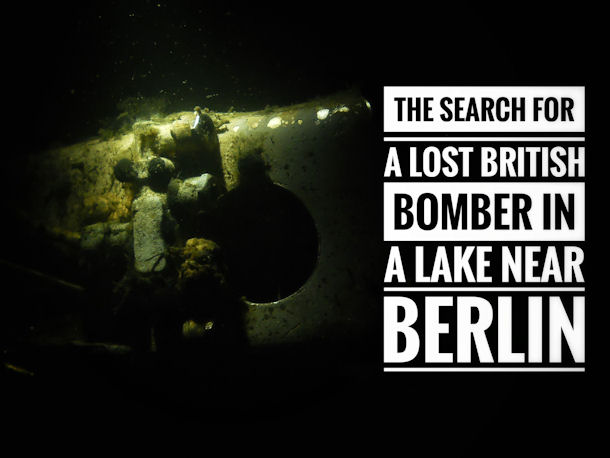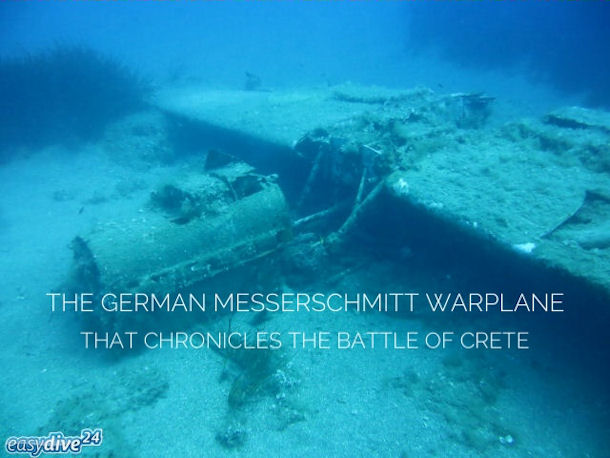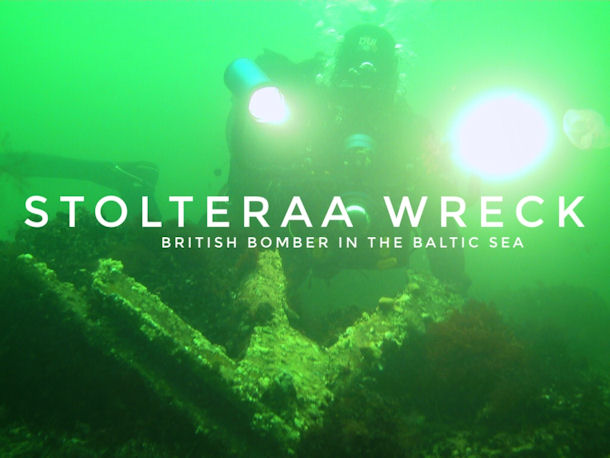by Roger Blum
A spy thriller on Lake Stößensee
Salvaging a fallen Soviet fighter jet in Berlin-Spandau
|
|
60 years ago, a Soviet fighter jet crashed into Lake Stößensee in Berlin-Spandau. The tragic accident at the height of the Cold War led to one of the most spectacular espionage campaigns that West Berlin had seen.
|
|
On the afternoon of April 6, 1966 at 3.20 pm, Captain Boris Vladislavovich Kapustin and Lieutenant Yuri Nikolayevich Janov took off from the East Germany’s Eberswalde-Finow military airfield in the direction of West Berlin with a Jak-28P interceptor fighter. The target was Köthen, a Soviet airfield in Brandenburg. Just 12 minutes after take-off, shortly after the aircraft had reached the specified altitude of 4,700 m, the pilot reported the failure of both his engines. The plane continued to lose altitude and was unable to manoeuvre away from the densely populated residential areas of West Berlin. The crew is said to have had permission to disembark by their ejection seats. Kapustin asked his co-pilot Janow to activate the trigger just before impact, but this did not happen.
|
|
A Jak 28 at the Finowfurt airfield, from which Captain Kapustin and Lieutenant Janow had taken off on the fatal flight.
|
|
Coming down fast over Berlin’s far-westerly neighbourhood of Spandau, they appeared to be heading for the lengthy Heerstrasse and Stößensee Bridge. It’s almost certain that both pilots tried everything to get the plane to hit uninhabited ground. They were looking for an open area to land. The last radio message that was intercepted from the aircraft is said to have been: "Where to, Jurji?" The pilot tried to pull the fighter jet up to avert hitting a heavily inhabited area. He steered the dying plane with the last of his might over the bridge and into the Stößensee lake.
|
|
View from the bridge to the lake "Stößensee" near Berlin
|
|
Soviet soldiers - the guard of honour stationed at the memorial in Tiergarten - were quick on the scene. They wanted to handle the cordoning off of the crash site, and were fast to announce the arrival of a Soviet rescue squad. However, the deputy British city commander Peter T. Hayman did not let them approach the wreck because it had landed in the lake, which was located in the British sector.
|
|
The bodies of the pilots were handed over to the Soviets by the British with full military honours. With a funeral march played by a Soviet band accompanied by the plaintive solo of a Scottish bagpipe, the Soviets and the British stood to attention as they gave the two pilots their final escort. In a televised speech, the Governing Mayor of West Berlin Willy Brandt thanked the airmen for sacrificing their lives to protect West Berliners.
|

|
|
At that point, the machine had yet to be identified. Specialists in Soviet aircraft models alongside specially trained divers and salvage specialists were flown from Great Britain to West Berlin. The jet’s recovery, which had initially been headed by private companies from Berlin and the German police, became the exclusive territory of the British. A Jak-28P Soviet combat aircraft was found in the lake. Until then, the Allies had not known that the Soviet Union was already replacing parts of its 24th Air Army, stationed in the GDR, with Jak-28s. The hope was that the wreck would provide valuable insight into the technical progress of the Soviet Air Force. The pieces of wreckage recovered from the water by British engineering units were immediately covered with tarpaulins and experts got straight to work on examining the debris. While doing so, the aircraft experts managed to recover electronic equipment that indicated the machine had a novel device for defending against radar-controlled anti-aircraft missiles. The radar-based system would be dubbed “Identification, friend or foe” (IFF).
|

|
|
Just one week after the crash, on April 13, 1966, the remains of the wreckage were handed over to units of the Soviet Army – only without the dismantled systems and engines. The Soviets called for the handover to take place at the sector border of Berlin’s Havel north eastern river – on the Soviet side; the British, on the other hand, wanted the swap to take place 100 m their side of the border. In the end a compromise was found: Boats from both the East and West met to hand over the remains of the wreck 25 meters deep into the British sector. Ten Soviet officers and 25 Red Army engineers moved most of the wreck onto a salvage vehicle and into the GDR.
|
|
It was five days later, on April 18, when divers found the first engine. It was salvaged in secret, and then brought to the British Berlin-Gatow airbase to be thoroughly examined. One week on, the divers discovered the second engine, and got round to informing the Soviets that the first engine had now been found. Three days later, the secret service sank the erstwhile disassembled and meticulously documented engine back into the lake. On May 2, both turbines were returned to the Soviets. The Soviets complained during the handover that "an important part" of the engine, which they chose not specify, was still missing – seemingly, the IFF. Allegedly, large parts of the radar system were never returned to the Soviets.
|
|
There were numerous speculations about the causes and backgrounds of the crash. Stories abounded: some said it was a failed espionage flight; others that one of the pilots had shot the other. The explosives that powered the ejection seats, with which the pilots could have saved themselves, had reportedly been removed. The rumours have been largely refuted.
|
|
Today, a plaque commemorates the tragic plane crash on Stößensee Bridge. It bears the following inscription:
|
|
On 6 April 1966, Soviet pilots Captain Boris Vladimirovich Kapustin and Lieutenant Yuri Nikolayevich Janov piloted their defective fighter plane into the Stössensee and lost their lives in the process. Through their selfless efforts they avoided an unforeseeable catastrophe in a nearby residential area. This plaque is a sign of humanity in memory of the sacrifice of Soviet soldiers during the Cold War.
|
|
The plaque on Stößensee Bridge
|
|
Another memorial stone is located at the Finow airfield in Berlin’s east where Captain Kapustin and Lieutenant Janow took off on that fateful flight. The memorial reads:
|
|
In memory of the victims of the Cold War. They gave their lives to save others. Lieutenant Janow - Captain Kapustin - 6 April 1966
|
|
Memorial stone in Finowfurt
|
|
|
Parts of the Jak are still said to lie amongst the mud of the Stößensee lake.
|
|
|
This could be interesting for you:
|

The Search for a Lost British Bomber in a Lake near Berlin
At the beginning of World War II, Commander-in-Chief of the German Luftwaffe Hermann Göring declared during a radio address: "No enemy bomber can reach the Ruhr. If one reaches the Ruhr, my name is not Göring. You may call me Meyer.” However, only a few years later, Adolf Hitler’s trusted advisor and war-chief was forced to make good on his promise. In 1940, Göring apparently introduced himself as Herr Meyer on arrival at a Berlin air-raid shelter while taking refuge from one of the many Allied bomber units that had started to decimate Germany’s cities.
[read more]
|
|
|

An Aegean Wreck: The German Warplane that Chronicles the Battle of Crete
About 800m off the coast of the small village of Anissaras near Hersonissos (Chersónissos) on the Greek island of Crete lies one of the most famous dive sites in the Mediterranean Sea. At the bottom of the Aegean Sea, at a depth of 24m, lays the well-preserved wreckage of a German World War II Messerschmitt Bf 109 fighter. The question is, was the German airplane shot down during "Operation Mercury" in May 1941?
[read more]
|
|

Stolteraa Wreck - Lost British Bomber on Baltic Sea near Warnemünde
Just off from Stolteraa, a small stretch of coast on the Baltic Sea near Warnemünde, lies in a depth of 6 m the wreck of an English bomber. The remains of the plane are located 1.5 nm west of the lighthouse in the area. Theoretically, the spot can be reached by swimming from land. To get there and back, however, it is approximately 1,400 m, a distance not to be underestimated. Therefore it’s preferable to dive by boat.
[read more]
|
|
|
|
|
The opinions of other divers are both incredibly interesting and helpful to us. Through the experiences of other travellers, we have been able to uncover many useful tips and gain wonderful insight into other countries, as well as finding out about accommodation, the local community, and various activities, all in advance of arriving at our planned destination. Therefore, we would be very pleased to receive any other travel reports on the topic of diving & snorkelling in Germany, which we would gladly present here on our website. Simply contact us at info @ easydive24.de
|
|
|
|


